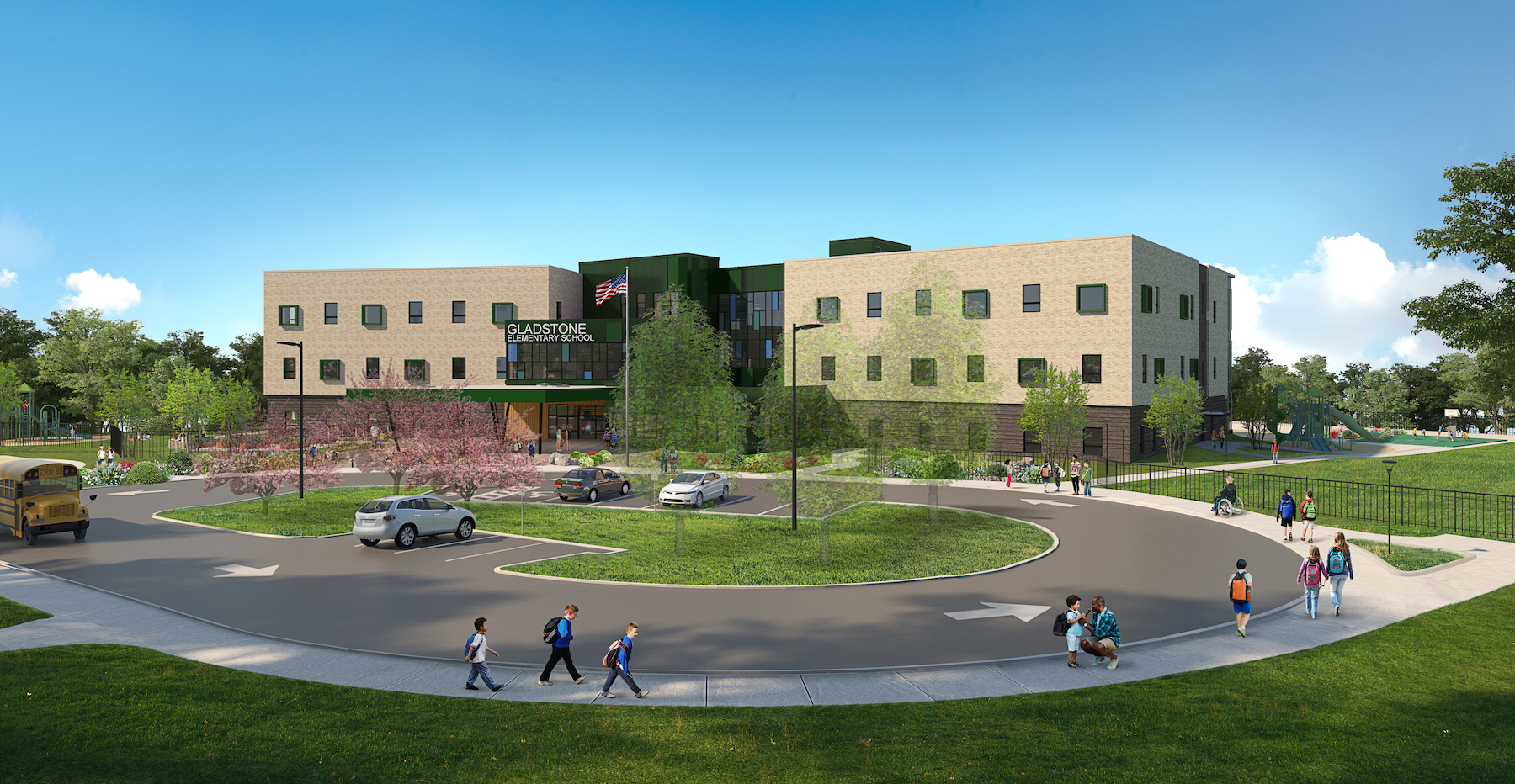Last November, Community Consolidated School District 15, consisting of 20 schools and seven municipalities in Illinois, approved the $93 million Moving 15 Forward referendum. Upon that approval, the District began work to address three major areas of improvement: repairing and restoring facilities, updating learning spaces, and streamlining students’ transitions from elementary through middle school into local high school districts 211 and 214.
Included in this effort is the expansion of Plum Grove Junior High School in Rolling Meadows, Ill., from a junior high serving seventh and eighth graders into a middle school that also educates sixth grade students.
Plum Grove Middle School, which will serve more than 800 students, is seen as a cornerstone of the District’s move toward adolescent-focused middle schools that use the “house” concept, which creates teams of teachers and staff that share smaller groups of students through an academic schedule.
Plum Grove’s $18.4 million upgrade and expansion got started on July 27. Wold Architects and Engineers provided the designs, and Nicholas & Associates is the general contractor. As part of Phase 1 of a four-phase construction plan, additions at Plum Grove include two new three-story classroom wings, or “houses,” which form the backbone of the middle school concept, for a total of 12 new general education classrooms.
Each grade-level house has its own learning commons with an innovative shared learning hub, including a central collaboration space, new science lab spaces, and modern, flexible classrooms. In addition, the project includes site updates such as traffic and paving improvements, a new track, and play fields.
Construction is expected to be completed for the 2024-2025 school year.
Sustainable, energy efficient design

A week before Plum Grove’s expansion was getting underway, the City of Cranston, R.I., held a groundbreaking ceremony for its new $83 million, 105,000-sf Gladstone Elementary School. This is one of five core building projects identified in Cranston’s five-year facility improvement plan that has been approved by Rhode Island School Building Authority for Housing Aid State Reimbursement.
Gladstone Elementary will be 40,000 sf larger than the existing school it replaces, and will incorporate the student body of Arlington Elementary, bringing its total to 798 K-5 students. The Building Team on this project includes Gilbane Building Company, Jacobs Engineering, and Finegold Alexander Architects. Construction is scheduled for completion in 2025.
The old school had been functioning up until June 14, but was in serious need of repair, with boarded-up windows. It will be demolished and during construction students will be relocated to a temporary location in Cranston.
The new building is designed to exceed current sustainability and energy codes. A combination of sub-surface and surface stormwater filtration systems are part of its scope, and the project will be compliant with the Northeast Collaborative for High-Performance Schools Criteria program (NE-CHPs), which provides guidance and verification for new school projects, renovations, and additions.
Gladstone will feature a combination of learning and community engagement areas, like a cafeteria and gymnasium with performance spaces. Its learning spaces will be modeled after Eden Park School in Garden City, where open floor plans contribute to collaborative learning environments. Gladstone will also have designated special-education classrooms, administration areas, a nurse’s office, and food preparation space.
Related Stories
Giants 400 | Aug 22, 2023
Top 115 Architecture Engineering Firms for 2023
Stantec, HDR, Page, HOK, and Arcadis North America top the rankings of the nation's largest architecture engineering (AE) firms for nonresidential building and multifamily housing work, as reported in Building Design+Construction's 2023 Giants 400 Report.
Giants 400 | Aug 22, 2023
2023 Giants 400 Report: Ranking the nation's largest architecture, engineering, and construction firms
A record 552 AEC firms submitted data for BD+C's 2023 Giants 400 Report. The final report includes 137 rankings across 25 building sectors and specialty categories.
Giants 400 | Aug 22, 2023
Top 175 Architecture Firms for 2023
Gensler, HKS, Perkins&Will, Corgan, and Perkins Eastman top the rankings of the nation's largest architecture firms for nonresidential building and multifamily housing work, as reported in Building Design+Construction's 2023 Giants 400 Report.
Market Data | Aug 1, 2023
Nonresidential construction spending increases slightly in June
National nonresidential construction spending increased 0.1% in June, according to an Associated Builders and Contractors analysis of data published today by the U.S. Census Bureau. Spending is up 18% over the past 12 months. On a seasonally adjusted annualized basis, nonresidential spending totaled $1.07 trillion in June.
K-12 Schools | Jul 31, 2023
Austin’s new Rosedale School serves students with special needs aged 3 to 22
In Austin, the Rosedale School has opened for students with special needs aged 3 to 22. The new facility features sensory rooms, fully accessible playgrounds and gardens, community meeting spaces, and an on-site clinic. The school serves 100 learners with special needs from across Austin Independent School District (ISD).
Market Data | Jul 24, 2023
Leading economists call for 2% increase in building construction spending in 2024
Following a 19.7% surge in spending for commercial, institutional, and industrial buildings in 2023, leading construction industry economists expect spending growth to come back to earth in 2024, according to the July 2023 AIA Consensus Construction Forecast Panel.
School Construction | Jun 29, 2023
K-12 school construction: 5 ways strong community relations can lead to success
When constructing a K-12 school, building positive relationships with the community—including students, parents, school staff and residents—is critical to the success of the project. Here are five ways Skanska puts the community first when building K-12 schools in the Pacific Northwest.
Standards | Jun 26, 2023
New Wi-Fi standard boosts indoor navigation, tracking accuracy in buildings
The recently released Wi-Fi standard, IEEE 802.11az enables more refined and accurate indoor location capabilities. As technology manufacturers incorporate the new standard in various devices, it will enable buildings, including malls, arenas, and stadiums, to provide new wayfinding and tracking features.
Engineers | Jun 14, 2023
The high cost of low maintenance
Walter P Moore’s Javier Balma, PhD, PE, SE, and Webb Wright, PE, identify the primary causes of engineering failures, define proactive versus reactive maintenance, recognize the reasons for deferred maintenance, and identify the financial and safety risks related to deferred maintenance.
K-12 Schools | Jun 5, 2023
How to achieve cost-effective kindergarten classrooms
Educational architect Robin Randall shares realistic advice about the challenges of adding developmentally appropriate, play-based kindergarten classrooms while respecting budget limitations.

















